Lucia and Amit wanted a ceremony that focused on the important things in life and included traditions from both their backgrounds and a welcome for baby Arti. However, despite two years of planning, there were a few surprises on the way to their perfect day.
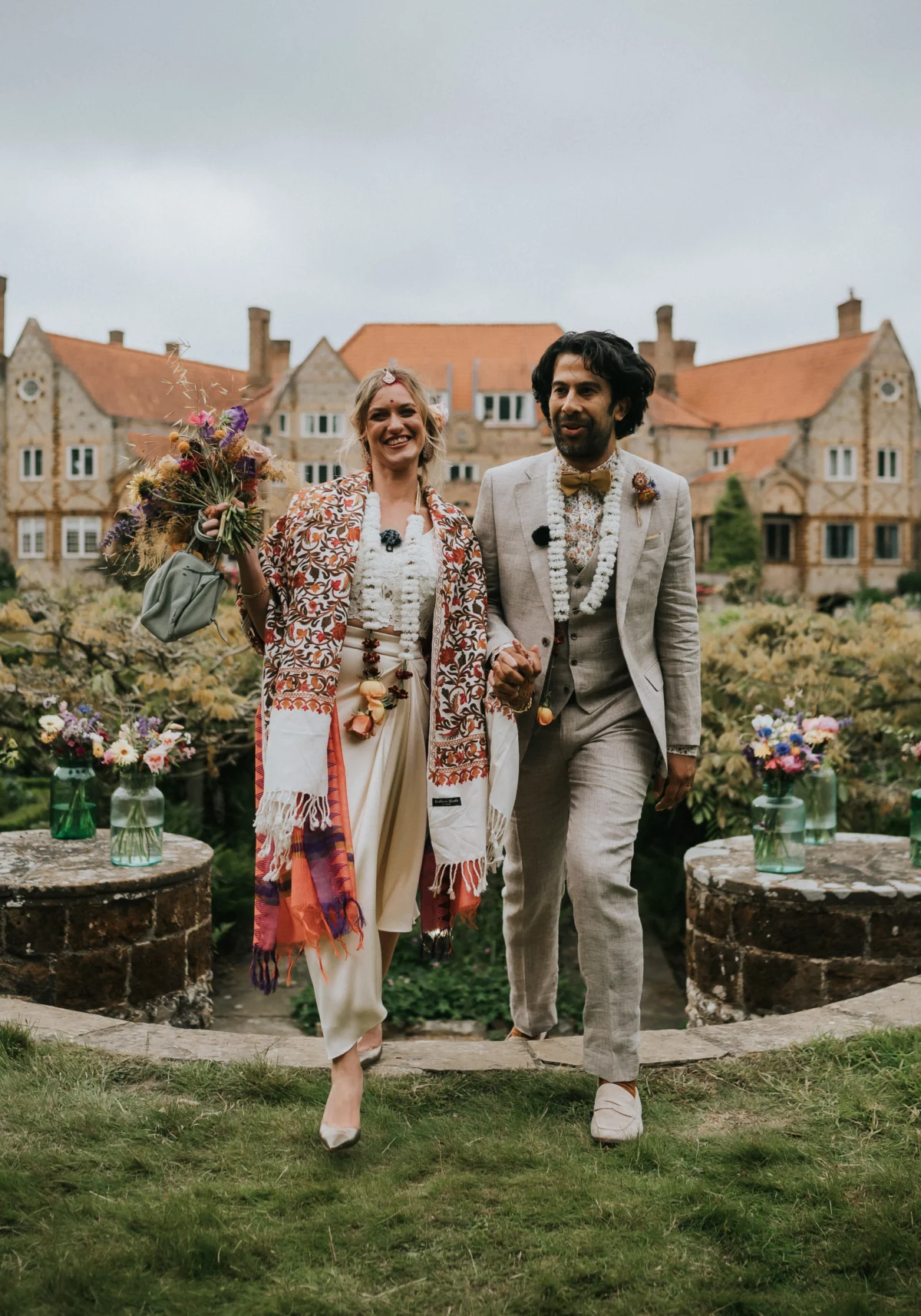
‘I come from a Catholic background and Amit’s background is Hindu but we are not religious”, Lucia says, explaining the reasons behind their choice of a humanist wedding. ‘A humanist ceremony enabled us to include traditions from both cultures, not to choose one over the other. ’
‘My mum was apprehensive about what it would look like,’ says Amit. ‘This was breaking new ground – it wasn’t a traditional Indian wedding. She wanted to infuse as many Indian parts into it as possible.’
A ceremony that connected people across generations
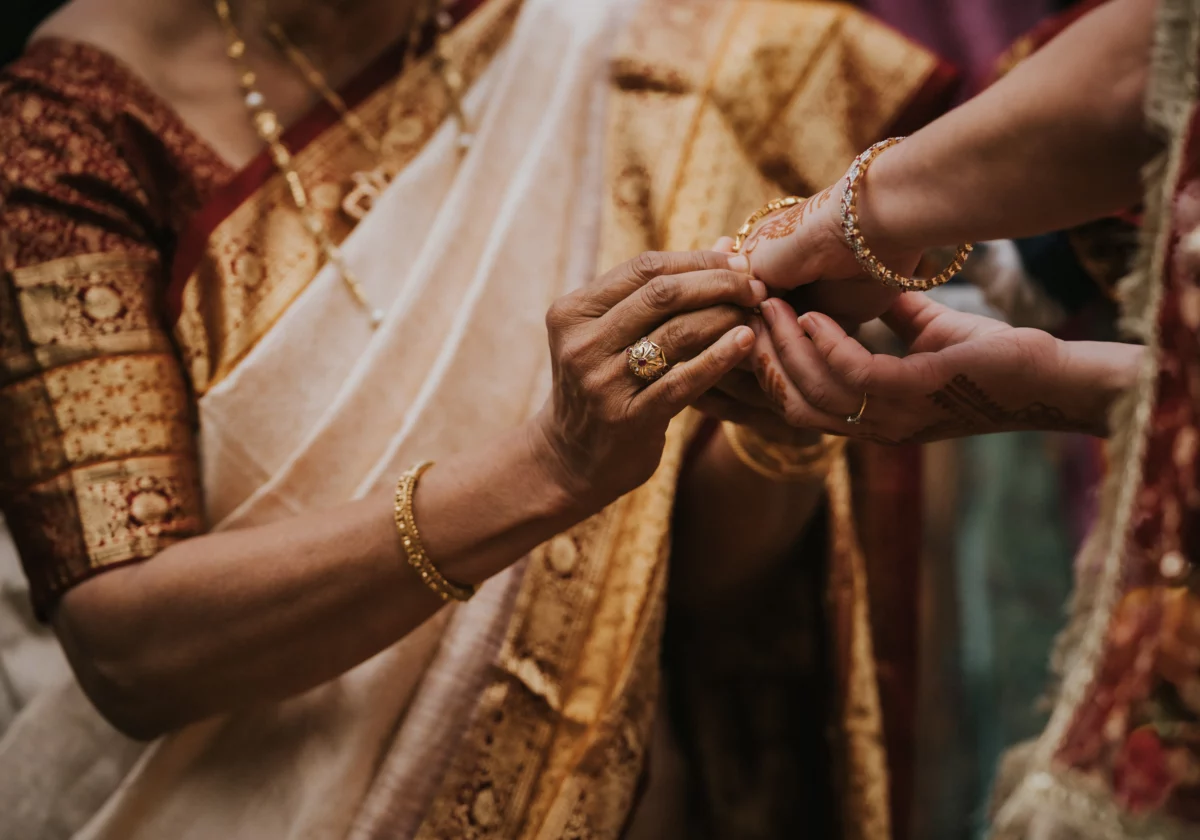
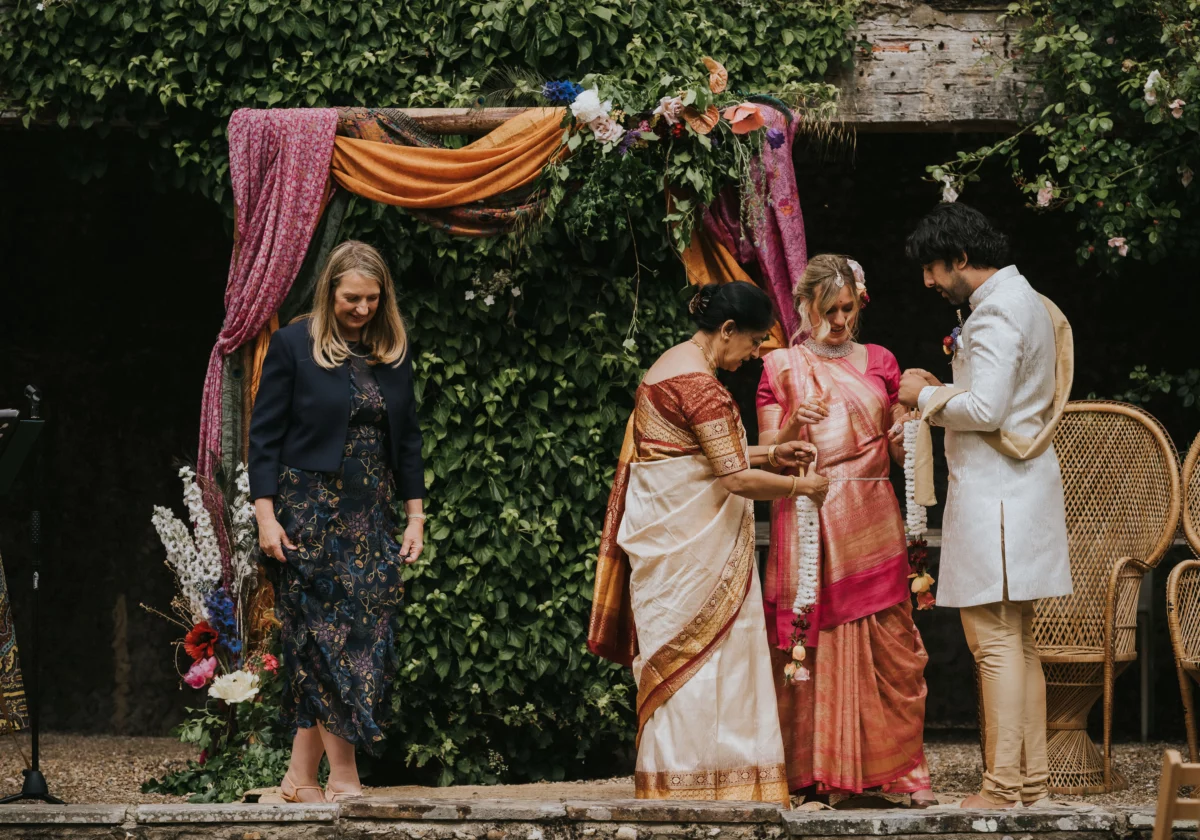
These traditional Indian elements included the couple exchanging garlands, helped by their mothers, and walking round a fire together.
‘A key aspect of Indian weddings is the walk around the fire,’ explains Amit. ‘You walk around seven times, because a circle is 360 degrees and seven is the only number between one and nine by which 360 cannot be divided. It’s a symbol that your marriage will be indivisible.’
Each of the seven circuits also symbolises a different wish for the couple, including hopes for a long and peaceful life together, and strength to share happiness and pain.
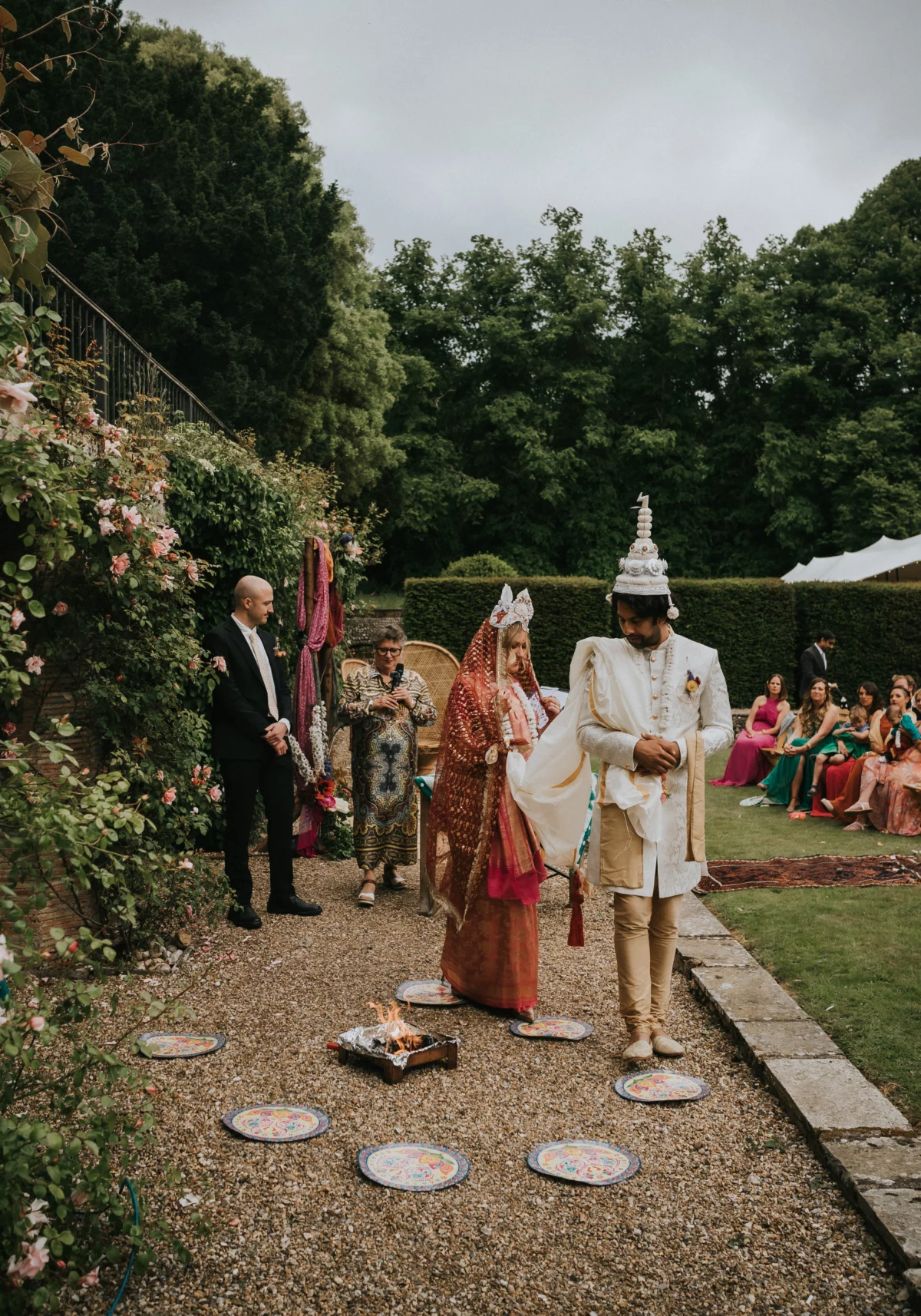
‘A humanist ceremony allowed us to create our own bespoke, non-religious ceremony,’ continues Amit. ‘It was the Indian traditions, not the religious aspects, that were meaningful for us. My parents and grandparents and ancestors all walked round the fire like we did. It goes back generations. I felt the connectedness of it all.’
A ceremony that was meaningful for everyone
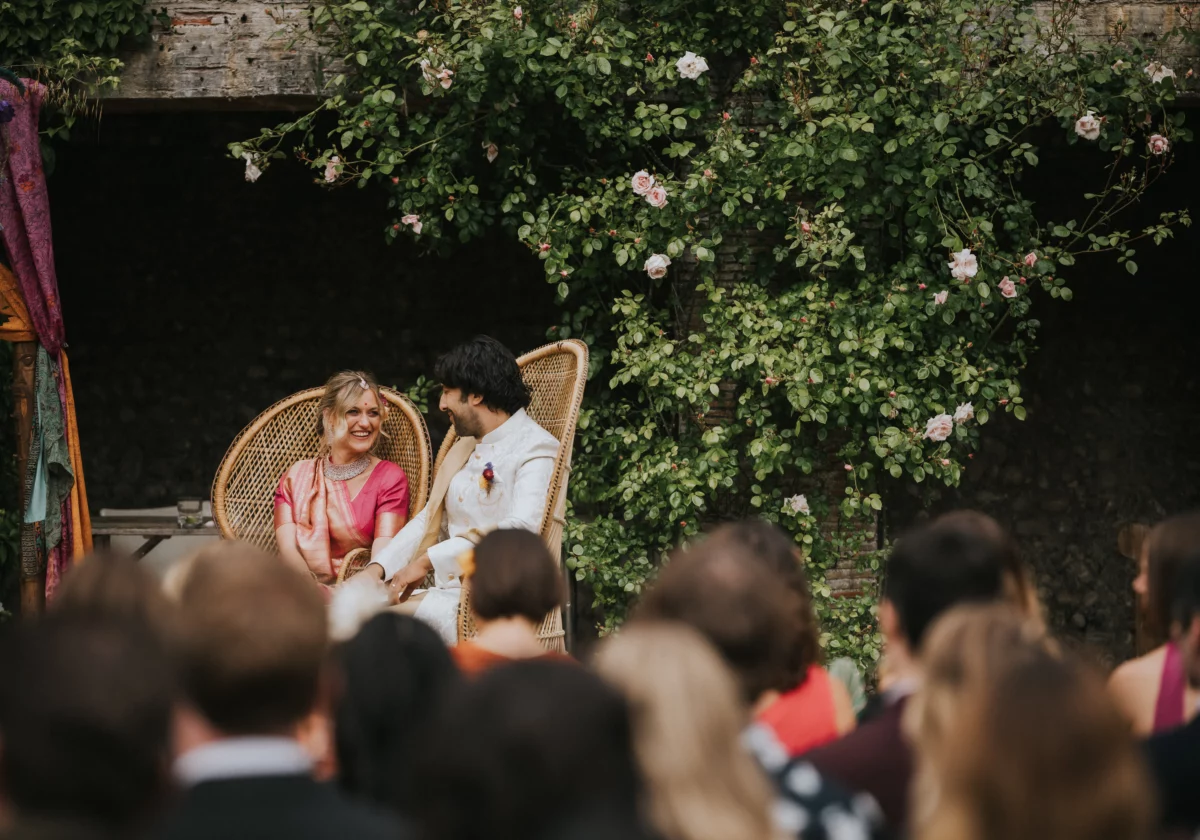
The couple’s celebrant, Dawn, was by Lucia and Amit’s side to make sure all the different elements came together and that the ceremony struck a chord with everyone who was there.
‘As a celebrant, you have to make sure the couple are getting what they really want,’ says Dawn. ‘Lucia and Amit could choose from my suggestions and the suggestions from their families, but it had to remain their ceremony. It was a matter of delicacy and good judgement and being respectful of culture.
‘Although the ceremony wasn’t in a temple, it had to be meaningful for everyone. For example, on all the ritual and symbolic elements we asked Amit’s mum and aunties for advice. As this was a humanist ceremony, we drew a careful line between the ritual and symbolic, and worship. These beautiful symbols were very important for Amit’s family, but they weren’t part of an act of worship.’
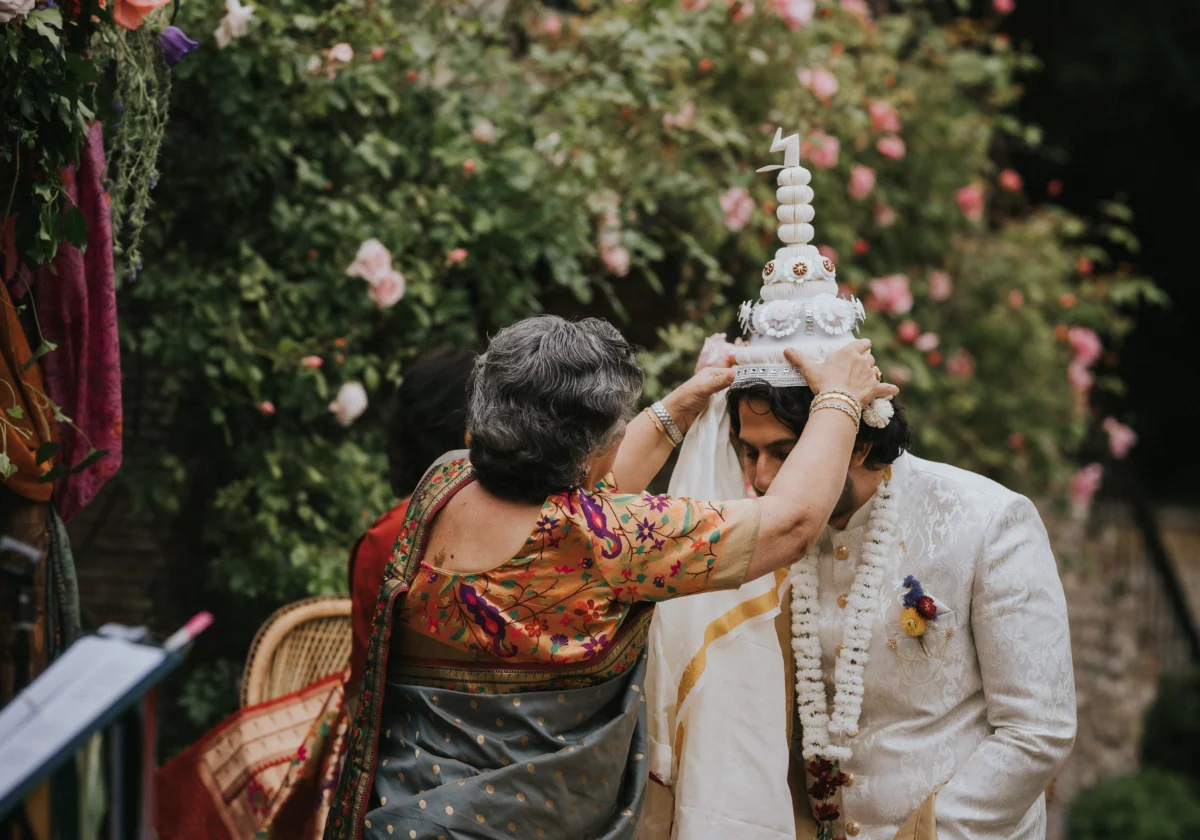
‘We brought in meaningful parts of our own traditions,’ agrees Amit. ‘There were even a few things that we worked in at the last minute! Indian weddings are normally chaotic, it’s part of the deal. It’s more authentic. It’s not performance, it’s life!’
A ceremony that welcomed baby Arti to the world
It’s fair to say that, over the last two years, life has been pretty eventful for Lucia and Amit.
When they first started planning their wedding, the couple were living in Norfolk and the Covid-19 pandemic had not yet begun. By the time they got married, we had all lived through lockdown, and Lucia and Amit had moved to Australia and become parents to their son Arti.
This meant several postponements, a shift to planning a wedding in a different time zone from ten thousand miles away and making some changes to the ceremony!
‘Including a naming ceremony for Arti within the wedding was Dawn’s suggestion,’ says Amit. ‘We wrote a poem for him and read it in front of everybody. We had bubbles, music playing and our own ‘Simba’ moment, where I lifted him up above my head.’
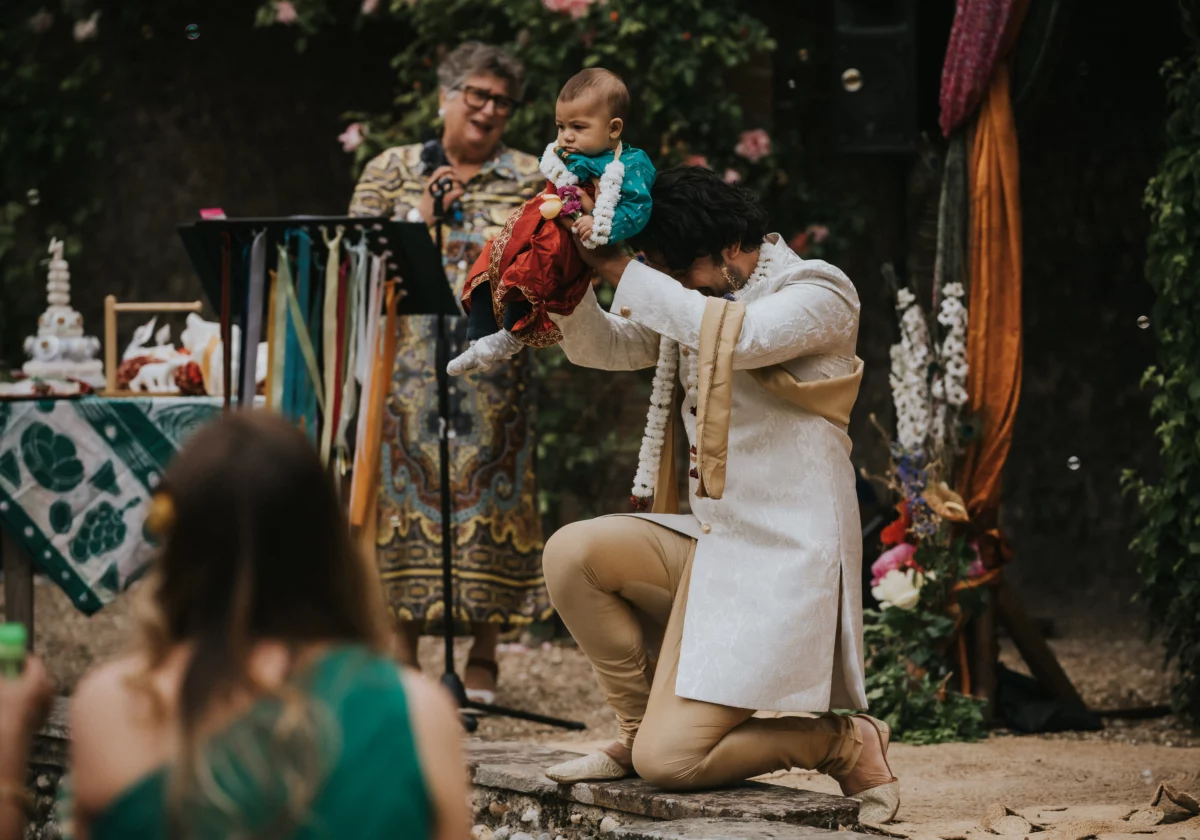
‘Watching Amit hold Arti up was the highlight for me,’ adds Lucia. ‘The music and the bubbles made it so special. It was a real teary moment. Another highlight was being able to walk down the aisle with my dad at the start.’
‘The whole family could welcome Arti to the world,’ explains their celebrant Dawn. ‘And the parents could present their little prince to the crowd and show him, ‘These are your people, these are the ones who will be there for you’. Arti also had his own little garland, like those Lucia and Amit had at the start of the ceremony.’
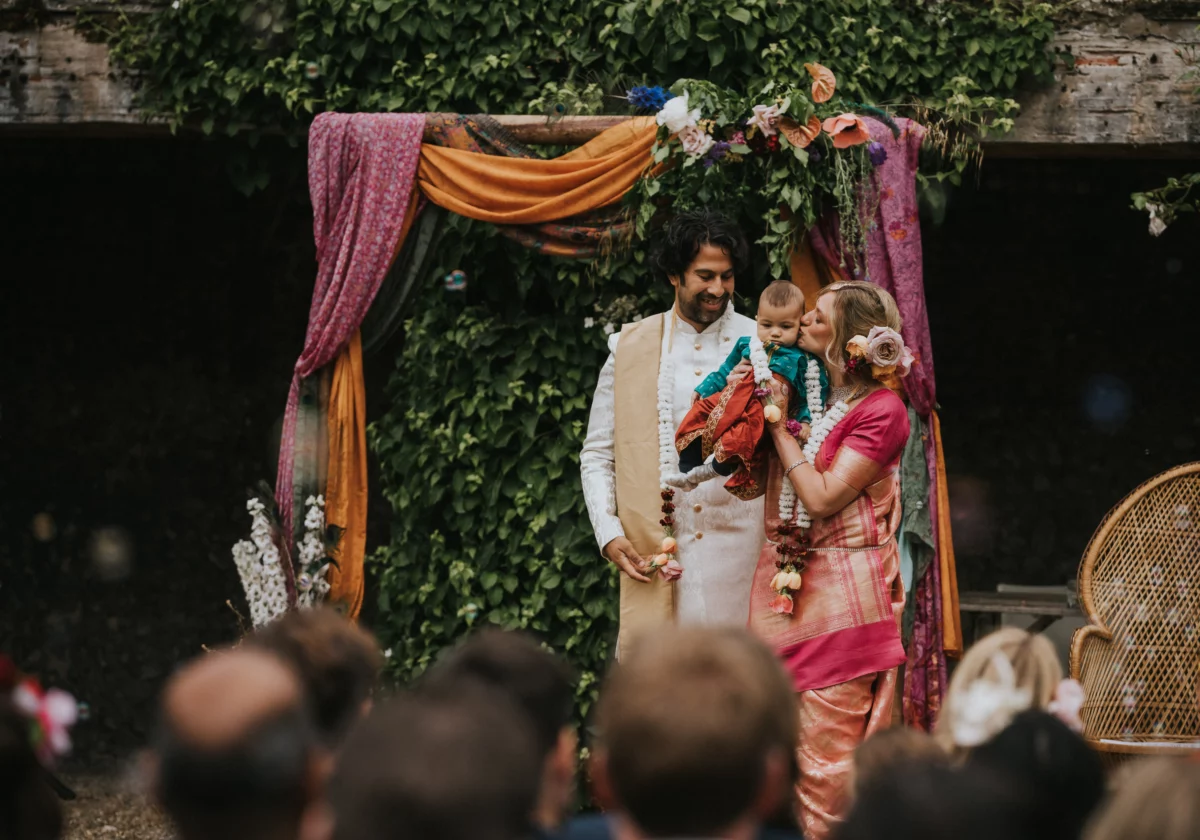
The combination of tradition, spontaneity, and having to overcome so many obstacles in the planning of the day, made it an especially emotional occasion.
‘Standing at the front of the ceremony, I genuinely thought that lots of people must have hayfever, then I realised that they were actually crying!’ Amit says, looking back on the day. ‘The feeling of bringing people together and touching their hearts was so important to us.’
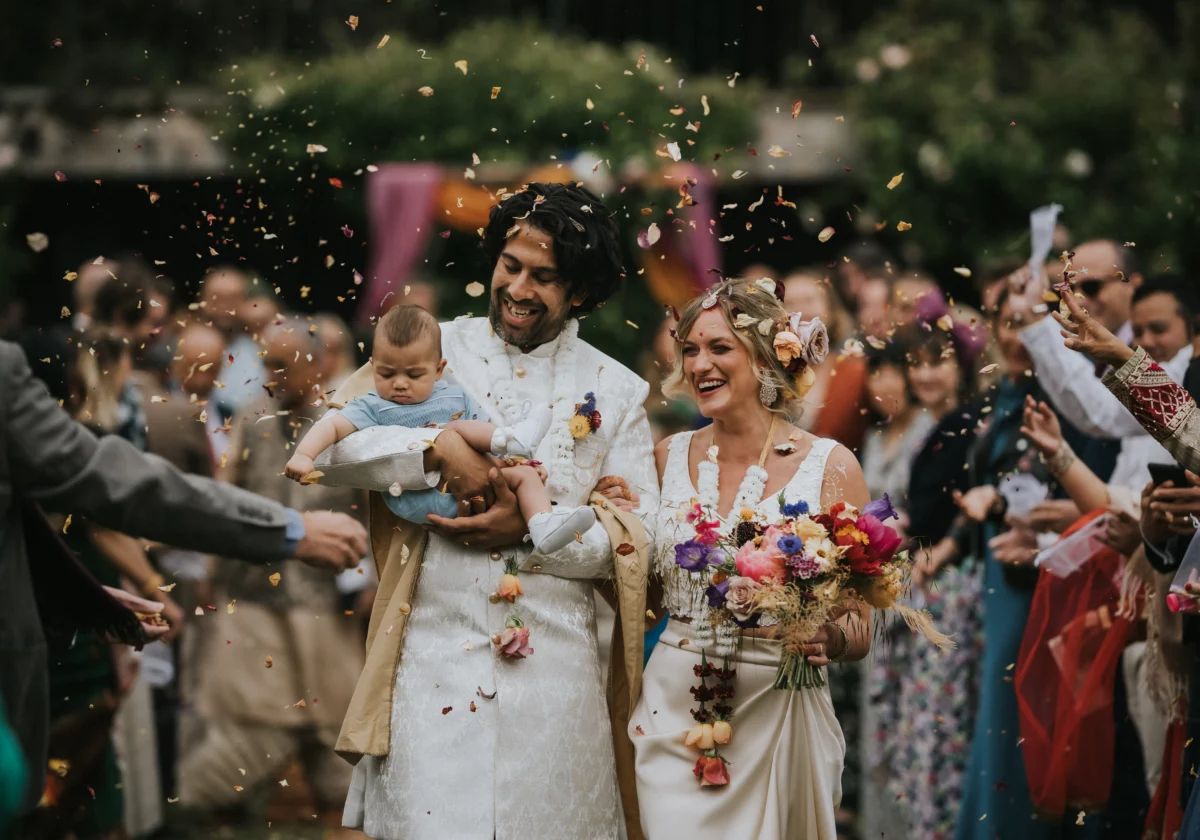
Our heartfelt thanks to Lucia, Amit, baby Arti and celebrant Dawn for sharing the story of his beautiful ceremony with us. More thanks go to Luis Holden, for the stunning photographs.
The Humanist Ceremonies celebrant featured in this blog is Dawn Rees. Dawn says ‘my wedding and naming ceremonies are individual and humorous but always have a touch of gravitas where it matters – just to remind you that you are marking a momentous change in your life!’ Find out more about Dawn on her website.
To book Dawn, or find a celebrant near you for your wedding or naming ceremony, then head to the Find a Celebrant page to get started!
Now… time to enjoy more photographs from Lucia and Amit’s wonderful day!
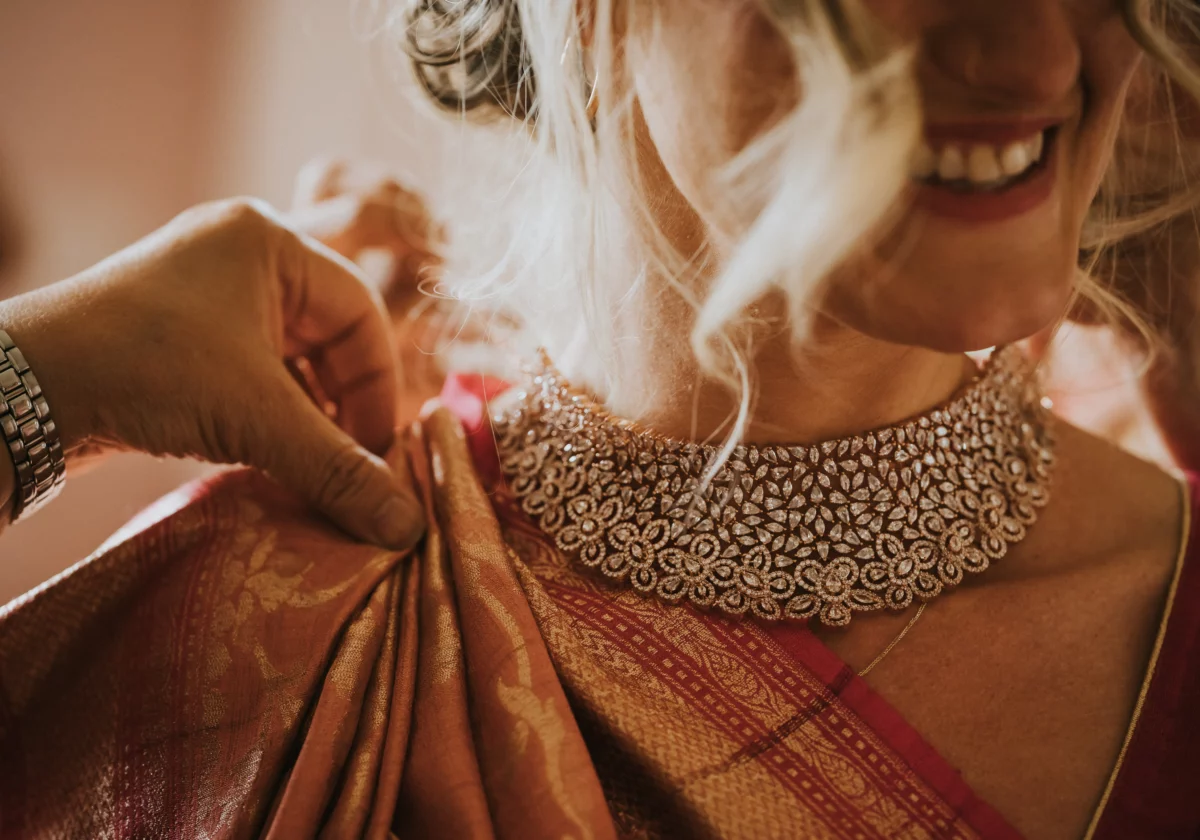

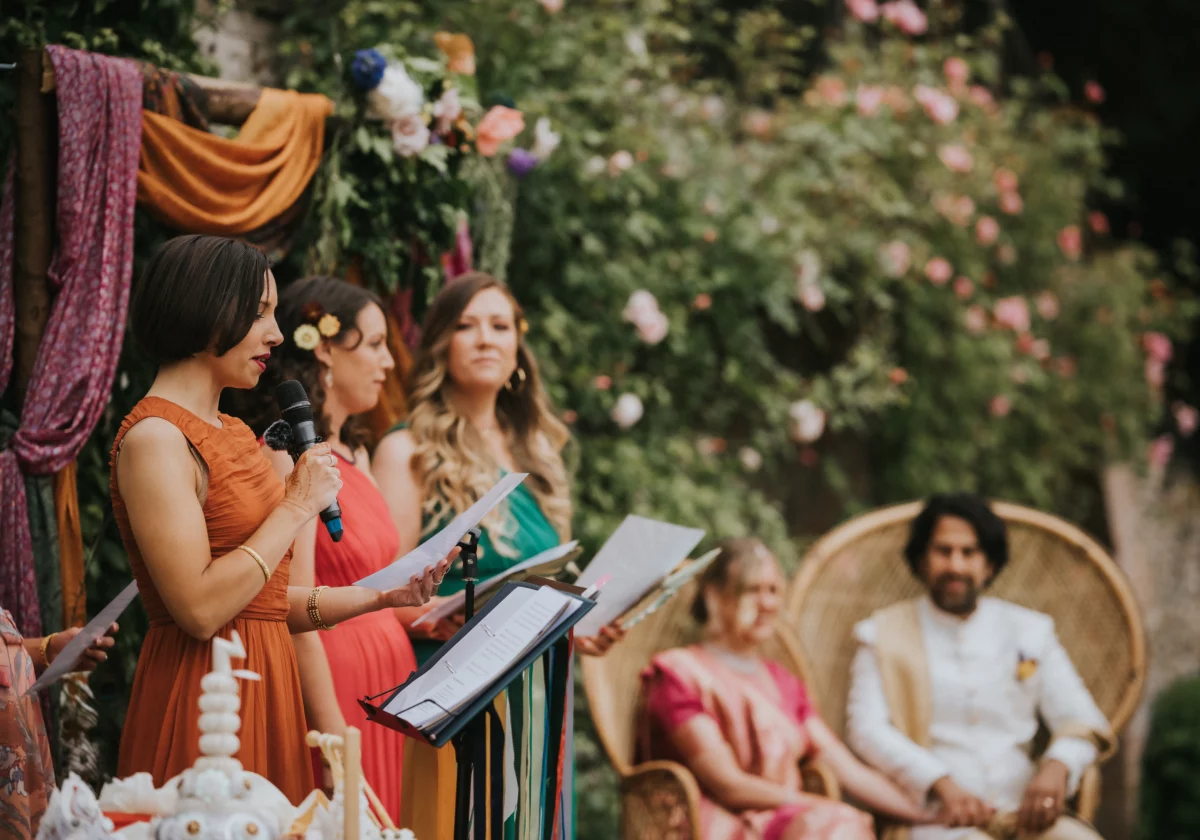

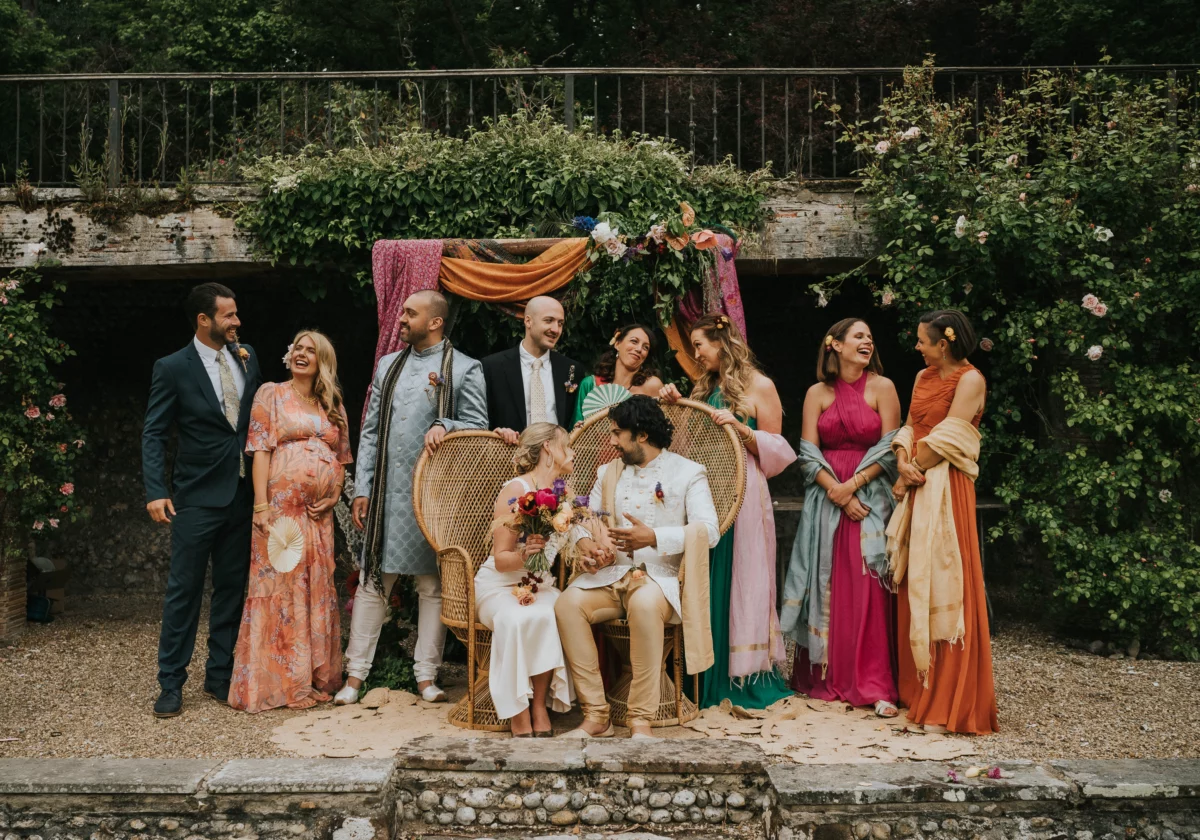
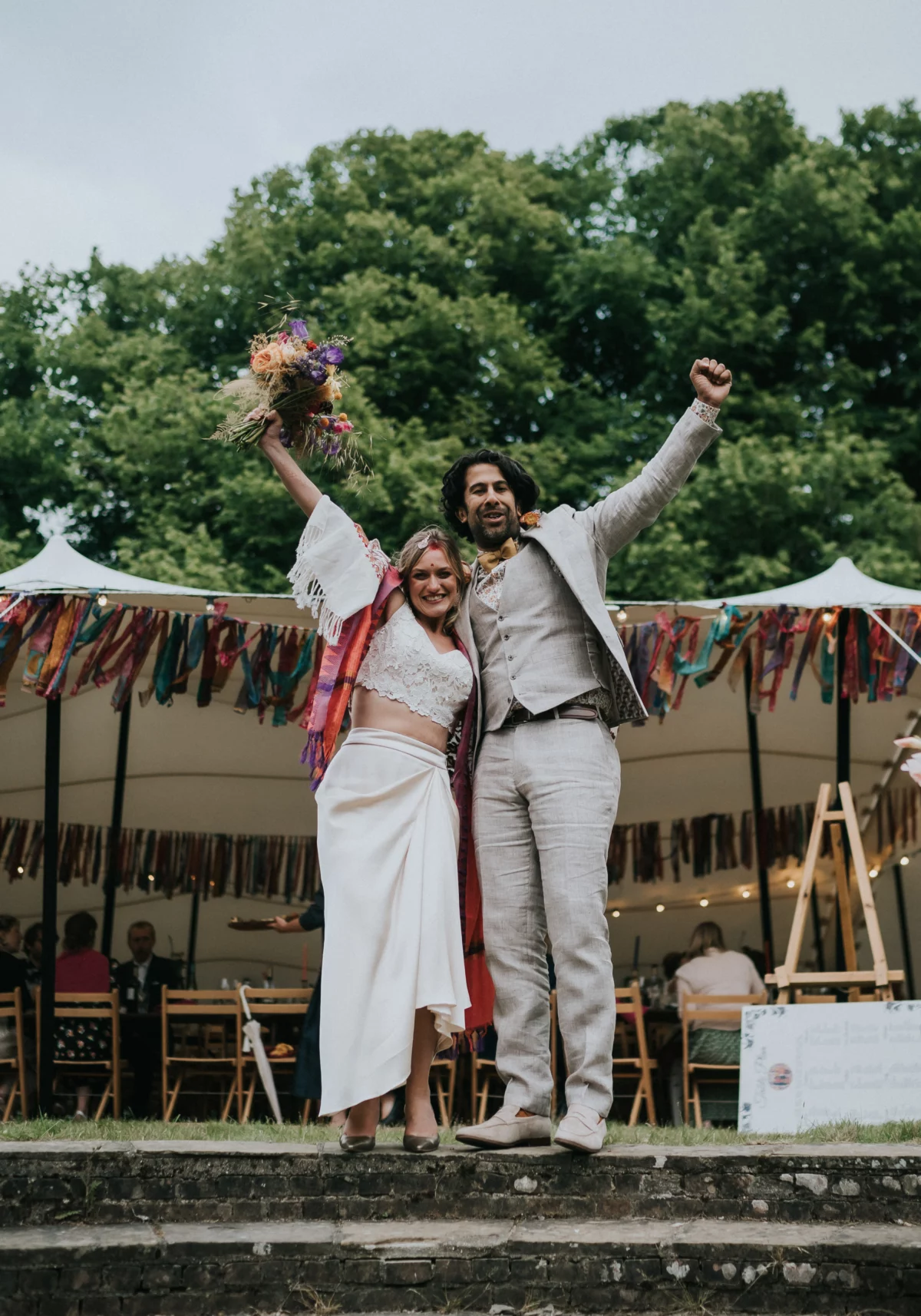
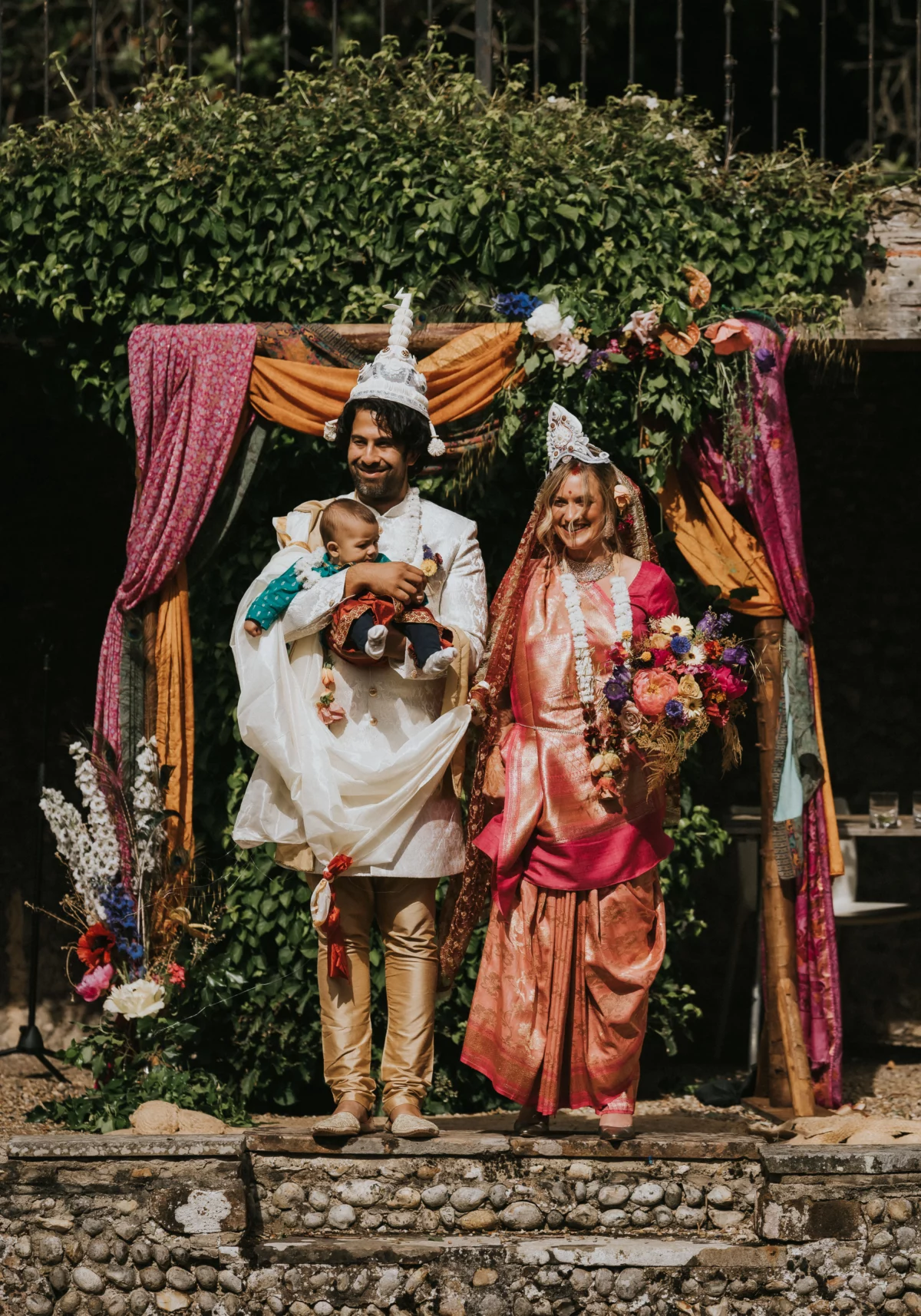
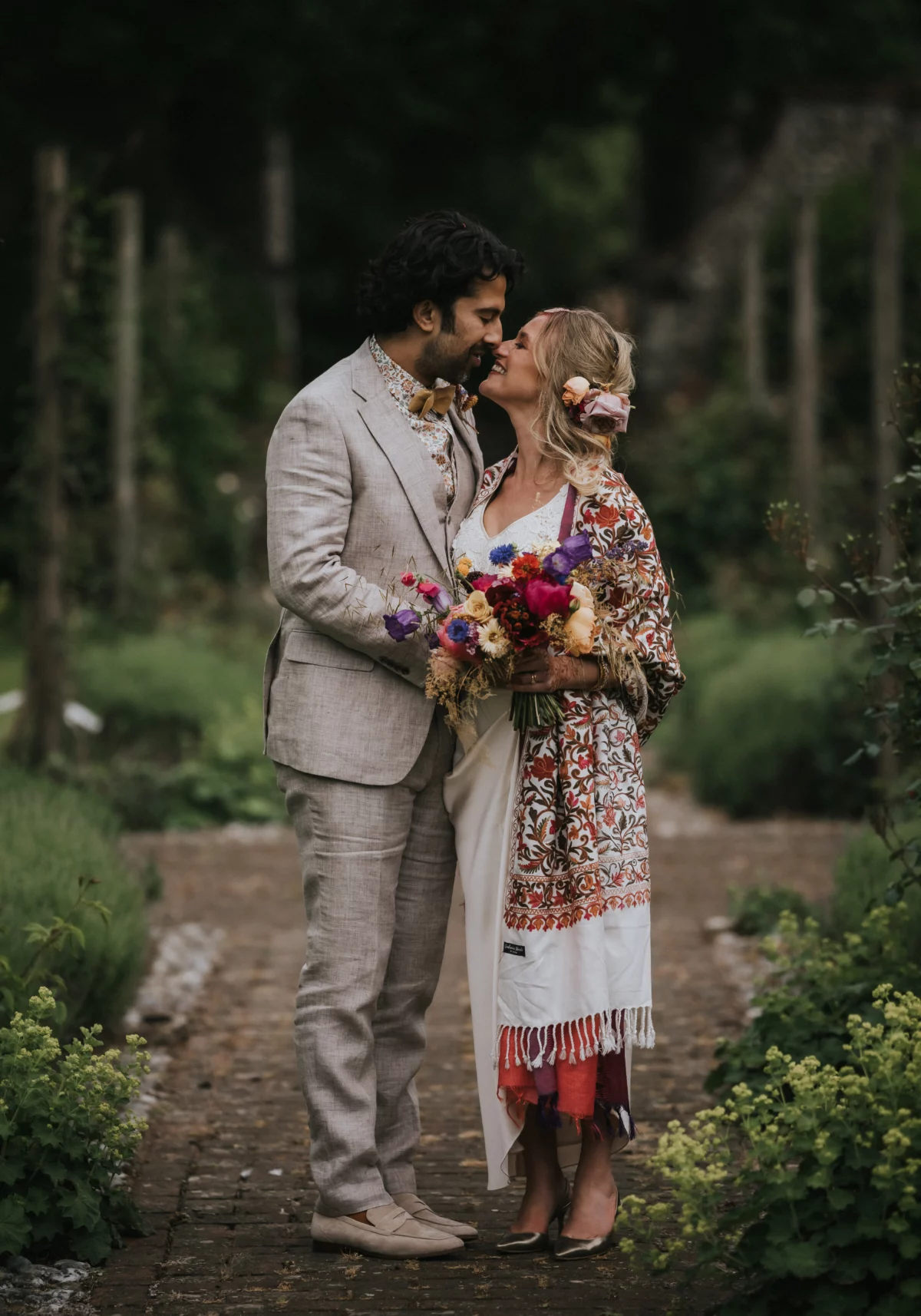

Find out more about humanist weddings and naming ceremonies
- What is a humanist wedding?
- What is a humanist naming ceremony?
- 10 tips for an outdoor humanist wedding
- What’s the difference between a naming ceremony and a christening?





